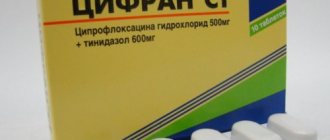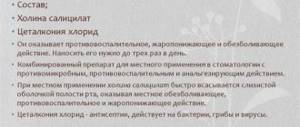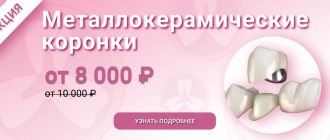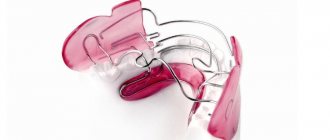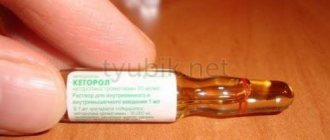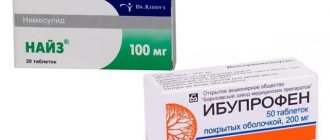Headache is a pressing problem for many people. According to statistics, every person has encountered this unpleasant symptom at least once in their life, even those without chronic diseases, injuries or other pathologies. Pain syndrome can manifest itself with varying intensity, but regardless of this, it causes discomfort, reduces performance and impairs the quality of life. Headache tablets are a popular and affordable remedy that is, perhaps, in every home medicine cabinet.
Many drugs are available without a prescription and are familiar to several generations of our compatriots. However, there are no universal pills for headaches, since this symptom can accompany more than 40 pathologies. In order to determine the cause of the pain, you need to consult a doctor. If this is not possible, then you should at least know in general terms what painkillers are on sale, how they work and how they differ.
Causes of headaches
Pain syndrome may differ in nature, localization, distribution, duration and other characteristics. In each case, the doctor makes a diagnosis based on a combination of many factors that may indicate a particular disease. For example:
- sharp pain may appear due to spasms of cerebral vessels or cervical osteochondrosis;
- throbbing pain may indicate migraine, otitis media, disruption of the vascular system, glaucoma and a number of other diseases;
- Prolonged pain usually appears with meningitis, encephalitis, tuberculosis, as well as with severe damage to the nervous system.
In addition, for various diseases, pain can have a specific localization:
- with migraines, certain eye pathologies, inflammation of the nasal sinuses, pneumonia, pain is concentrated in the forehead and eyebrows;
- for hypertension, osteochondrosis, tension in the muscles of the neck and head, neuralgia of the occipital nerve - in the back of the head;
- with increased intracranial pressure, flu, sore throat, pneumonia, sinusitis - in the forehead and temples;
- for migraines, muscle spasms in the neck and head, and the appearance of a tumor - in the crown area.
Not only diseases, but also frequent stress, bad habits, sleep disturbances, and weather dependence can cause headaches. In women, pain can be associated with the menstrual cycle, in men - with fatigue, in children - with colds, in older people - with disorders of the cardiovascular system and neurological pathologies. The pathological condition may be accompanied by nausea and vomiting, fever, chills, dizziness and other symptoms. In each case, an individual selection of medications is required.
Headaches can be caused by various reasons. For some diagnoses, the patient requires urgent hospitalization. Thus, self-diagnosis is unacceptable, and uncontrolled use of headache medications can worsen the disease. Painkillers should be selected by the attending physician in accordance with the diagnosis.
Don't endure the pain! Buy a painkiller and pick it up at your city pharmacy in half an hour Buy
What and why does cancer hurt?
To figure out what approach is needed to relieve pain, the oncologist needs to understand its cause and origin.
One of the big difficulties in diagnosing cancer (malignant neoplasms) is that the patient often has no pain at all at first. The tumor may simply be too small.
This also happens if the tumor grows in loose tissue (such as the mammary gland) or enlarges inside an organ cavity (for example, the stomach). Also, those types of cancer in which there are no solid primary tumors - leukemia, malignant diseases of the hematopoietic system - can develop without pain.
In our practice, there were cases when even stage IV oncological processes were asymptomatic - until the appearance of multiple metastases, the patient was not in pain.
In all other cases, when pain is present, it is important for the doctor to know why it appeared. Based on the reasons for their occurrence, we can distinguish three main groups.
Nociceptive pain. Awakened by nociceptors - pain receptors. These receptors are a network of branched endings of peripheral nerves that “connect” all our internal organs to the spinal cord, as well as bones and every point on the surface of the skin. When damage (or exposure that threatens damage) to any part of the body, nociceptors send a signal to the spinal cord, and it, firstly, triggers avoidance reflexes (for example, withdrawing a hand when burned), and secondly, “reports upward” - to brain.
Scheme of the passage of nociceptive and other signals from external stimuli
And there, the complex interaction of the thalamus, hypothalamus and cerebral cortex triggers stress reactions of the autonomic nervous system: dilation of the pupils, increased pulse, increased pressure, etc. At some point, the brain “suspends” all other nervous processes, because pain first priority. It is more important than anything else for survival, the brain believes. And the patient at this moment cannot think normally or do any other things.
In cancer, nociceptive pain is most often a reaction to the tumor itself or metastases. Thus, metastases in the spine can give breakthrough, sharp pain when the patient changes body position.
Neuropathic pain. Its cause is a disruption in the functioning of nervous structures - nerves, spinal cord or brain. It combines two factors: on the one hand, intensity - the patient is in a lot of pain, sometimes even strong analgesics do not help. On the other hand, localization is difficult. Unlike acute nociceptive pain, the patient often cannot tell where exactly it hurts.
Such pain is caused by the growth of a tumor or metastasis when they put pressure, for example, on the spine or pinch nerve roots. Unfortunately, the cause may also be side effects of antitumor treatment.
Dysfunctional pain. The case when there are no organic causes of pain, but it does not go away: for example, the tumor has already been removed, healing after the operation has passed, but the pain remains. It happens that the pain, according to the patient himself, is much stronger than it should be given his state of health.
In such cases, it is necessary to take into account the psychological state of the patient. Severe stress can significantly affect changes in perception, up to completely psychogenic pain.
Our clinical practice shows how much knowledge of oncology psychology helps in such cases. In Russia, not all doctors pay due attention to it, although it is in such a situation that it helps to stabilize the patient’s condition and reduce his excruciating pain syndrome.
Additional complicating “bonuses” to the main types of cancer pain include painful manifestations of side effects from the antitumor therapy itself:
- pain during healing after surgery;
- spasms and cramps;
- ulceration of mucous membranes;
- joint and muscle pain;
- skin inflammation, dermatitis.
Modern doctors use more and more precisely dosed radiation therapy, more and more “accurate” targeted drugs, and less and less traumatic surgery to reduce the frequency and severity of such unpleasant side effects. Today at the clinic we carry out, for example, much more surgical interventions using endoscopic and laparoscopic methods - through thin punctures or very small (1-1.5 cm) incisions in the skin. The methods all boil down to the same thing: to prolong the patient’s normal life.
List of effective headache pills
There are no universal painkillers that can be used in any situation. Even the strongest pills will not bring the desired effect if their action is not aimed at eliminating the cause of the pain syndrome. Despite this, you can find ratings for 2021 on the Internet with lists of the best headache medications. You cannot rely on this information, since the selection of medications should be carried out by the attending physician.
Below is a list of inexpensive medications that are in demand and can be purchased without a prescription as a one-time headache relief.
Aspirin
Tablets based on acetylsalicylic acid are almost certainly in every home medicine cabinet. The medicine can be used for migraines, cerebrovascular accidents, inflammatory diseases, and alcohol dependence syndrome. Aspirin is a good blood thinner and can prevent the formation of blood clots. Due to this quality, the drug is recognized by experts as one of the most effective in the treatment of vascular diseases. However, acetylsalicylic acid is not recommended for people with diagnoses such as gastric and intestinal ulcers, blood clotting disorders, etc.
Aspirin, according to the instructions, can be taken 1 tablet 3 times a day after meals. The duration of treatment is determined by the doctor and is usually no more than 2 weeks.
ASPIRIN WITH BAYER tab. thorn. d/prig.r-ra No. 10
from 335 rub.
Effervescent tablets; 5 strips of 2 effervescent tablets; manufacturer Bayer Bitterfeld GmbH, Germany
Available in 116 pharmacies
— +
Paracetamol
The active ingredient of this drug is in most cases well absorbed by the body and helps with headaches of various etiologies. Paracetamol is one of the affordable, but at the same time effective and gentle antipyretic drugs. Other medications in this group are also made on its basis, for example, Panadol for children.
The drug, in accordance with the instructions, can be taken once or up to 4 times a day, but no more than 5 days in a row, otherwise unwanted complications associated with an overdose of the active substance may develop.
PARACETAMOL PHARMSTANDARD tablet. 500 mg No. 10
from 6.50 rub.
Tablets 500 mg; 10 tablets; , Russia
Available in 144 pharmacies
— +
Citramon
This drug is one of the most common and accessible analgesics. You can take Citramon, according to the instructions, for mild headaches that may occur against the background of an increase in temperature or certain inflammatory processes. The therapeutic effect is achieved by increasing vascular tone and improving blood circulation. The active ingredients of most forms of Citramon are aspirin, paracetamol, caffeine, that is, the drug can have a combined effect.
Doctors recommend not to overuse these headache pills due to the likelihood of side effects. The duration of taking the medicine can be no more than 3 days. The daily dose can be no more than 8 tablets.
CITRAMON P PHARMSTANDARD table. No. 10
from 20 rub.
Tablets 240 mg + 30 mg + 180 mg (acetylsalicylic acid + caffeine + paracetamol); 10 tablets; , Russia
Available in 144 pharmacies
— +
Tempalgin
A combined action drug that eliminates headaches and has a sedative effect. This means that taking Tempalgin is not recommended if after this a person has to do work that requires concentration. At the same time, the active ingredient of this drug shows good effectiveness for pain of various types and severity.
In accordance with the instructions, Tempalgin can be taken up to 3 times a day. As a rule, in this case we are talking about persistent pain syndrome. The duration of treatment for headaches with this drug should be no more than 5 days.
TEMPALGIN tablet. p/o captivity. No. 20
from 147 rub.
Film-coated tablets; 2 blisters of 10 tablets; manufacturer Sopharma AD, Bulgaria
Available in 144 pharmacies
— +
Pentalgin
This is another popular combination drug. The use of Pentalgin, in accordance with the instructions, has an antispasmodic, anti-inflammatory and antipyretic effect. Its action is aimed at slowing down the production of hormones that provoke pain. In most cases, the desired result is achieved after taking one tablet.
It is recommended to take the drug no more than 3 times a day. The permissible duration of treatment for headaches is up to 5 days.
PENTALGIN tablet. No. 24
from 202 rub.
Film-coated tablets; 2 blister packs of 12 tablets each; , Russia
Available in 144 pharmacies
— +
Ibuprofen
A fast-acting drug indicated for migraines, as well as headaches that can be caused by inflammatory processes and nervous tension. Ibuprofen has antipyretic and blood thinning properties similar to Aspirin. The first effect after taking the medicine is usually observed after 10 minutes, but the drug shows its peak effect on average after 2 hours.
It is allowed to take no more than 4 tablets per day; other cases should be discussed with your doctor. The duration of treatment depends on the characteristics of the disease.
IBUPROFEN tablet. 400 mg No. 20
from 53 rub.
Film-coated tablets 400 mg; 2 blister packs of 10 tablets each; , Russia
Available in 142 pharmacies
— +
Spazgan
The product relieves spasm of the walls of blood vessels, eliminates the inflammatory process and relieves pain. “Spazgan” quickly brings relief and maintains its therapeutic effect for 4-8 hours. Despite the fact that the drug is available without a prescription and is indicated for a wide range of conditions, it is advisable to coordinate its use with your doctor.
“Spazgan” is a single-use drug, so the duration of taking the drug, in accordance with the instructions, should be no more than 3 days. If this rule is violated, there may be a risk of side effects.
SPAZGAN table. No. 20
from 111 rub.
Tablets 500 mg + 5 mg + 0.1 mg (metamizole sodium + pitofenone + fenpiverinium bromide); 2 blisters of 10 tablets; manufacturer Wockhardt Limited, India
Available in 144 pharmacies
— +
No-Shpa
The drug is prescribed primarily for headaches that occur after stress, physical or emotional stress. As a rule, such pain syndrome is characterized by moderation and absence of pulsation. “No-Spa” has an antispasmodic effect, relaxing the walls of blood vessels and normalizing blood circulation. The therapeutic effect occurs approximately 15 minutes after taking the medicine.
At a time, according to the instructions, it is recommended to take no more than two tablets. The daily dose of the drug should not exceed 8 tablets. It is prohibited to take No-Shpu for more than two days without consulting a doctor.
NO-SHPA table. 40 mg No. 100
from 189 rub.
Tablets 40 mg; 100 tablets in a polypropylene bottle with a PE stopper; Manufacturer: Chinoin Pharmaceutical and Chemical Works Co, Hungary, representative office of Sanofi-aventis Group, France
Available in 144 pharmacies
— +
Nurofen
A combined action drug that has an analgesic, antipyretic and anti-inflammatory effect. Nurofen has pronounced analgesic properties. If the patient does not know what to do with a severe headache that accompanies a migraine attack, then some experts recommend taking this drug once. Further treatment in this case should be prescribed by a doctor.
In accordance with the instructions, Nurofen can be used one tablet no more than 4 times a day. The breaks between doses of the drug should be about 4 hours. It is not recommended to use tablets for longer than 3 days, as there is a risk of side effects.
NUROFEN EXPRESS FORTE caps. 400 mg No. 20
from 344 rub.
Capsules 400 mg; 2 blisters of 10 capsules; manufacturer Banner Pharmacaps Europe BV, Netherlands
Available in 140 pharmacies
— +
Papaverine
An affordable antispasmodic, which, like No-Shpa, has a relaxing effect on the muscles of blood vessels, helps to expand their lumen and normalize blood circulation. Additionally, “Papaverine” has a sedative effect, so some doctors recommend taking it for frequent stress and insomnia.
According to the instructions, this remedy for headaches should be used no more than 4 times a day. You can take no more than 2 tablets at a time.
PAPAVERINA HYDROCHLORIDE suppositories rect. 20 mg No. 10
from 71 rub.
Rectal suppositories 20 mg; 2 blister packs of 5 suppositories each; , Russia
Available in 86 pharmacies
— +
Buscopan
An antispasmodic drug that can be used for severe headaches. Buscopan is also recommended by doctors as a remedy for seasickness or air sickness. In some cases, the drug is prescribed to children. Buscopan has a pronounced therapeutic effect after a single use, but it can also be used as part of a complex treatment.
In accordance with the instructions, adults can take this drug 1-2 tablets up to 3 times a day. If the pain does not go away, consult a doctor. The dosage for children is selected individually.
BUSKOPAN tab. 10 mg No. 20
from 448 rub.
Film-coated tablets 10 mg; 2 blisters of 10 tablets; , France
Available in 138 pharmacies
— +
Drotaverine
An antispasmodic drug, which in composition and properties is close to Papaverine, but surpasses it in effectiveness and duration of action. "Drotaverine" relieves pain by eliminating vascular spasms and restoring tissue nutrition.
Since the drug can cause a number of side effects, its use must be discussed with your doctor. If it is necessary to eliminate pain at home, it is important for the patient to follow the instructions.
DROTAVERINE tab. 40 mg No. 20
from 23 rub.
Tablets 40 mg; 2 blister packs of 10 tablets each; , Russia
Available in 1 pharmacy
— +
Types of painkillers and their purposes
Pain relievers are divided into 2 main types: narcotic and non-narcotic. In the first case, the drugs cause drug addiction, give a feeling of euphoria, cause drowsiness, and sometimes depress the respiratory system. Non-narcotic drugs relieve mild to moderate pain and do not cause drowsiness or euphoria. For severe types of pain, such as post-operative pain, they do not help. They are released in the form:
- tablets;
- injections;
- rectal suppositories;
- ointments;
- gels;
- drops
Narcotic drugs are prescribed by a doctor and are issued strictly according to a prescription. In addition to drug addiction, they can negatively affect the cardiovascular system, depress the respiratory system, and disrupt brain function. These include such famous names as Morphine, Codeine, Tramadol, Fentanyl and others. They are used in the following cases:
- pain relief for extensive bone fractures;
- with myocardial infarction;
- malignant neoplasms at a late stage;
- for 3rd and 4th degree burns;
- with severe liver and kidney spasms;
- for pain relief during childbirth;
- as an anesthetic;
- during the period of postoperative pain.
Non-narcotic drugs, in turn, are divided into anti-inflammatory, antipyretic, antispasmodic and combined. Many of them are sold without a prescription, although they have a number of side effects. They are prescribed for:
- toothache;
- headache;
- mild to moderate postoperative pain;
- mechanical injuries;
- muscle pain due to sprains and ligament ruptures;
- rheumatoid arthritis;
- osteochondrosis;
- osteoarthritis;
- radiculitis;
- hepatic colic;
- elevated temperature accompanied by fever.
These include the well-known Aspirin, No-Shpa, Solpadein, Nurofen, Pentalgin, Analgin and others. Despite their universal availability, they are also addictive, but of a different type. The body simply stops responding to them, tolerance to the drugs develops, and they stop working. In this case, the dose cannot be increased. It is better to replace one drug with another or take a break for a month.
Contraindications to the use of headache medications
Each drug intended for pain relief has a number of indications and contraindications. If you have the latter, it is recommended to consult your doctor before taking the pills.
Main contraindications to the use of painkillers:
- individual intolerance to the components of the drug;
- period of pregnancy and breastfeeding;
- cardiovascular diseases;
- blood clotting disorder;
- bronchial asthma and other pathologies of the respiratory system;
- ulcerative lesions and erosions of the gastrointestinal tract;
- hepatitis and liver failure;
- allergic diseases, etc.
To minimize the risk of complications, it is necessary to entrust the selection of headache remedies to a qualified doctor. Only a specialist will be able to take into account the compatibility of various drugs in complex therapy and select the required dosage.
Rating of the best antispasmodics
No-shpa
An effective pain reliever based on drotaverine belongs to the group of myotropic antispasmodics. The drug reduces the tone and motor activity of smooth muscles of internal organs, moderately dilates blood vessels. Like other painkillers of the antispasmodic group, No-shpa helps relieve pain from spasms of the smooth muscles of the bladder, spastic colitis, diseases of the biliary tract and gallbladder, and peptic ulcers. No-shpa also helps with headaches caused by spasm of blood vessels.
Severe renal and liver failure, intolerance to drotaverine are contraindications for use. No-spa almost never has side effects. However, it must be borne in mind that taking pills can cause a severe decrease in blood pressure, headaches and dizziness, increased heart rate, and insomnia. Long-term use may cause constipation and nausea. The maximum single dose of the drug is 2 tablets, the daily dose is 6 tablets. The duration of treatment without consulting a doctor is no longer than 2 days.
Analogs - Spasmol, Drotaverine, Spasmonet.
pros
- Eliminates spasms of various origins.
- It does not mask appendicitis and other surgical pathologies and does not complicate diagnosis (unlike Analgin and many other painkillers, it can be used for abdominal pain).
- The product is relatively safe, but No-shpa can be taken with caution by pregnant women and children.
Minuses
- Helps only with spasms. No-spa will not help with dental, joint, muscle pain, pain syndrome after injuries and burns.
- The pain goes away no earlier than half an hour after taking the pill.
- Weak effect, does not always relieve pain completely.
- High cost - about 60 rubles, 6 tablets per package.
Spasmol
The domestic antispasmodic based on drotaverine has a wide range of applications: gastroduodenitis, peptic ulcers, kidney and gallstones, spastic colitis and proctitis, vascular spasm (peripheral and cerebral), threatened abortion and postpartum contractions.
In some cases, taking Spasmol provokes a decrease in blood pressure, dizziness, feeling hot and sweating, increased heart rate, and sleep disorders.
Analogs - Drotaverine, No-shpa, Spasmonet.
pros
- Helps with any pain.
- Much cheaper than the similar No-shpa - about 40 rubles for 20 tablets per package.
Minuses
- A large number of contraindications.
- It only eliminates spasms, but does not always relieve pain.
Tablets for headaches during pregnancy
The period of waiting for a child is associated with hormonal changes and many other physiological changes in a woman’s body. During pregnancy, expectant mothers may experience frequent headaches, mood swings, and stress.
In
most cases , doctors recommend avoiding the use of painkillers . Each episode of prolonged pain requires contacting a gynecologist who is managing the pregnancy.
During this period, even drugs such as Aspirin and Analgin are prohibited. If a doctor prescribes tablets for headaches, then in minimal doses and mostly once. It should also be taken into account that a specialist may recommend different remedies for different periods.
How much pain, in points?
To choose adequate analgesia, the doctor must understand how much pain the person is in, try to understand where exactly it hurts and for how long. The prescription for pain relief depends on this. In addition to clarifying questions about the nature and location of pain, the doctor must assess its intensity.
All over the world, the NRS (numerological rating scale) and VAS (visual analogue scale) scales are used for this, or hybrid versions, depending on the age and condition of the patient. Very young children and very elderly people, as well as patients with cognitive impairment, may find it difficult to answer standard questions. Sometimes you have to work with such people only by behavior and facial expressions.
Pain rating scale from 0 (no pain) to 10 (unbearably painful)
It is important to obtain as much additional information as possible: if the patient believes that enduring is a worthy activity, and complaining is undignified, or it turns out that the patient has had periods of abuse and addiction, this can make adjustments to the treatment of pain syndrome.
We have already touched on the topic of working with the patient’s psychological state, and we will touch on it again - it is important for both doctors and the patient’s relatives to remember this. WHO even introduced a special concept for this: total pain . It covers not only physical stimuli, but also emotional and social negative aspects of the patient's life.
Considering such a multicomponent pool of causes for increased pain, the world medical community recognizes the most successful idea of “multimodal” therapy - when, along with drug treatment, physical activity within the patient’s strength, relaxation techniques and psychotherapy are used. All this creates conditions under which pain ceases to occupy a central place in the patient’s life, giving way to more important and interesting areas.
Headache medications for children
Pain syndrome in children can occur for various reasons. Thus, pediatricians usually diagnose migraines, tension headaches, increased intracranial pressure, and visual impairment. Each case requires a detailed examination and prescription of medications that will help eliminate not the discomfort, but the cause of its occurrence. Parents are advised to take into account that taking the wrong painkillers can also cause headaches in their child.
For recurring pain syndrome, the pediatrician may prescribe Ibuprofen or Paracetamol in dosages appropriate to the age of the small patient. In most cases, the following tips will help eliminate mild headaches:
- ventilation of the room where the child is;
- maintaining a sleep schedule;
- weak sweet tea (you can use lemon balm).
When can you take painkillers?
There are 2 types of pain that determine the possibility of using painkillers. These are acute and chronic. Acute pain occurs due to mechanical damage to the body:
- burns;
- fractures;
- dislocations;
- scratches;
- skin damage, etc.
This pain is short-lived, its origin is known. The patient is prescribed basic treatment, fractures are cast, sutures are applied to injuries, etc. In this case, the person does not necessarily experience the body’s signals in the form of pain and is prescribed painkillers to make recovery easier.
The second type of pain, chronic, can last for a month or a year. As a rule, it is associated with a long-term internal disease, for example, osteoporosis, cancer, autoimmune diseases (rheumatism, osteochondrosis, etc.). In this case, you cannot take medications to relieve pain without making a diagnosis. The body reports that there are problems in the body that need to be corrected. It is necessary to undergo an examination and prescribe treatment, and not to drown out unknown pain with drugs.
What helps with headaches, besides pills?
Despite the variety of painkillers, today it is difficult to find a drug that does not have side effects. For those patients who cannot take pills, there are other methods to eliminate pain. They can be used at home, at work, while traveling and other places. At the same time, the patient also needs to know the cause of discomfort in order to choose the best option.
What to do for headaches without pills? Here are a few simple and accessible recipes that have shown effectiveness in practice.
1. Mint infusion. The product can be used for migraines and headaches caused by colds. To prepare the infusion, pour 1 tablespoon of dry herb with a glass of boiling water, leave for about half an hour and strain. Use in two doses during the day.
2. Oregano decoction. The drug has a vasodilator and sedative effect. To prepare the decoction, pour 1 tablespoon of the herb into two glasses of boiling water and leave for half an hour. You need to take half a glass of oregano infusion 3 times a day. Every day you need to prepare a new decoction.
3. An herbal mixture, including mint leaves, chamomile, valerian roots and fennel fruits, can be recommended for frequent headaches caused by stress and overwork. To prepare 2 tablespoons of the herbal mixture, pour 0.5 liters of boiling water and leave in a thermos for 5 hours. It is better to do this in the evening, so that in the morning you can drink a glass of strained infusion on an empty stomach.
This is a small list of things that help with headaches at home. The above list can be supplemented with hundreds of other herbs, rhizomes, flowers, fruits and berries, which in various combinations can provide the therapeutic effect necessary for a particular patient. However, herbal medicine may also have limitations, so it is recommended to discuss the use of infusions and decoctions with your doctor.
How do strong painkillers work?
There are several types of effective pain relievers. The first is antispasmodics. They eliminate attacks of pain of various etiologies associated with diseases of the internal organs. The antispasmodic effect is achieved due to the fact that the active substance relaxes smooth muscles and blocks the transmission of nerve impulses. Analgesics are drugs of synthetic, semi-synthetic and natural origin. They easily cope with blocking pain, and they are used even during surgery.
Recently, combination drugs that combine both antispasmodics and analgesics have become widespread. This allows this type of remedy to affect all types of pain. The only serious drawback is that all adverse reactions from antispasmodics and analgesics only intensify.
Combined medications are approximately one and a half times more expensive than conventional antispasmodics and analgesics.
And non-steroidal anti-inflammatory drugs differ from previous drugs in the algorithm of their effect on the body and the strength of the effect. They relieve inflammation both externally and internally, therefore they are used to prevent complications after surgery. However, they can also be used for standard treatment at home.
Drugs for pregnant women
It is not recommended to take medications during pregnancy. But no one is immune from toothache, even if a woman visited the dentist before conception; inflammatory diseases can develop due to hormonal imbalances and a lack of microelements.
Folk remedies such as rinsing with soda or herbal decoctions do not always help. In order not to endure the pain, you have to take pills. There are only a few drugs that are safe during pregnancy. First of all, this is Paracetamol. Although the components of this medicine penetrate the placental barrier, they are not toxic to the child. Ibuprofen can be used in the first two trimesters. It is contraindicated in later stages, as it reduces the amount of amniotic fluid.
If you have severe pain, you can take Analgin once, but only during the second trimester. Typically, pregnant women are advised to relieve toothache with local anesthetics, which are prescribed to children during teething. These are gels Kamistad, Cholisal, Kalgel, Dentol. There are also drops based on plant extracts and essential oils - Denta, Dentinox. Before using them, you need to study the composition, as herbs can cause an allergic reaction.

